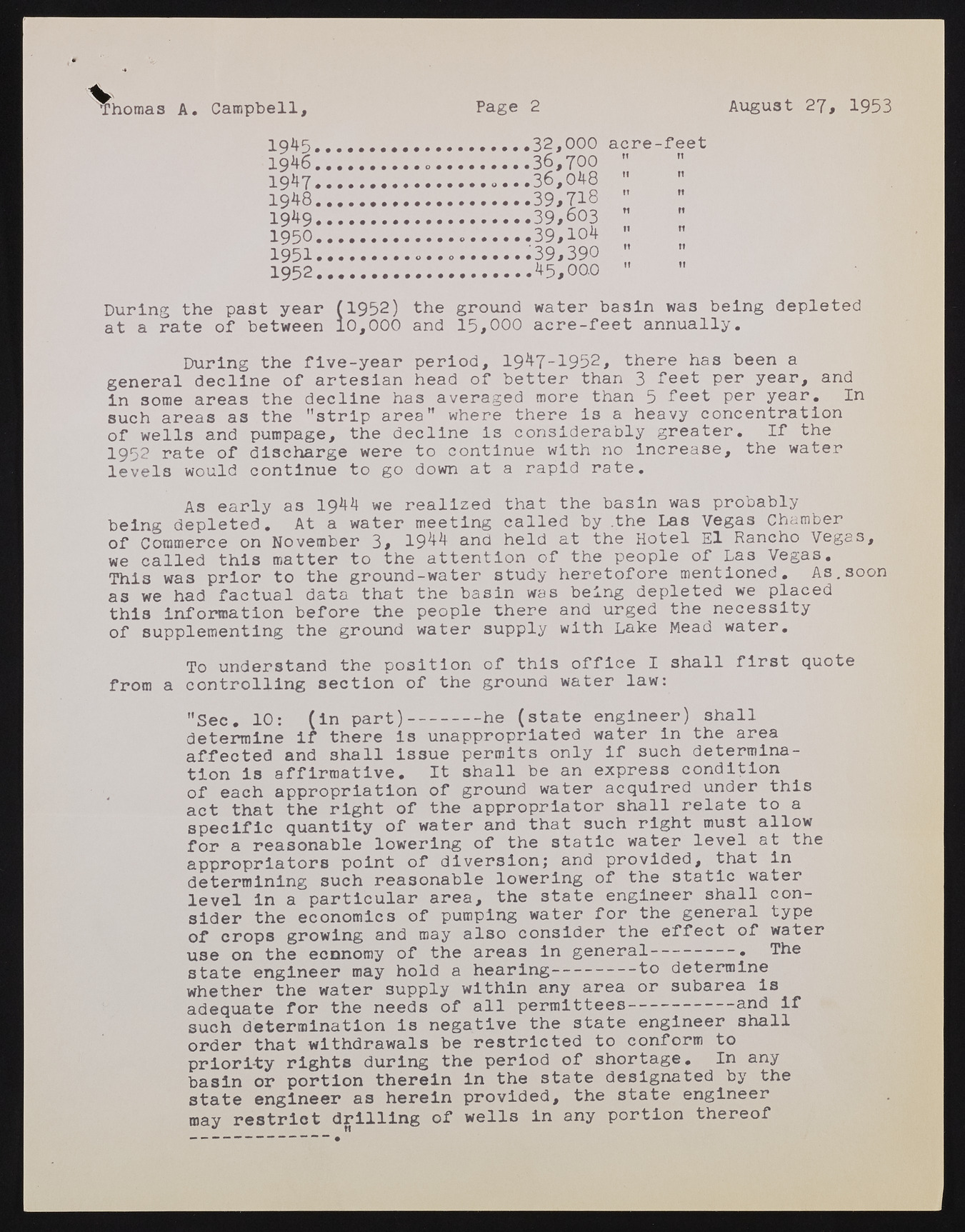Copyright & Fair-use Agreement
UNLV Special Collections provides copies of materials to facilitate private study, scholarship, or research. Material not in the public domain may be used according to fair use of copyrighted materials as defined by copyright law. Please cite us.
Please note that UNLV may not own the copyright to these materials and cannot provide permission to publish or distribute materials when UNLV is not the copyright holder. The user is solely responsible for determining the copyright status of materials and obtaining permission to use material from the copyright holder and for determining whether any permissions relating to any other rights are necessary for the intended use, and for obtaining all required permissions beyond that allowed by fair use.
Read more about our reproduction and use policy.
I agree.Information
Digital ID
Permalink
Details
More Info
Rights
Digital Provenance
Publisher
Transcription
Thomas A* Campbell, Page 2 August 27, 1953 1945.. ,32,000 acre-feet 1946.. ,36,700 " " 19*7.. ,36,048 " 1948.. .39,718 1 19^9.. ,39,603 " 1950.. ,39,104 I " 1951.. ,39,390 " 1952.. ,45,000 " " During the past year (1952) the ground water basin was being depleted at a rate of between 10,000 and 15,000 acre-feet annually. During the five-year period, 19^7-1952, there has been a general decline of artesian head of better than 3 feet per year, and in some areas the decline has averaged more than 5 feet per year. In such areas as the "strip area" where there is a heavy concentration of wells and pumpage, the decline is considerably greater. If the 1952 rate of discharge were to continue with no increase, the water levels would continue to go down at a rapid rate. As early as 1944 we realized that the basin was probably being depleted. At a water meeting called by .the Las Vegas Chamber of Commerce on November 3* 19^ and held at the Hotel El Rancho Vegas, we called this matter to the attention of the people of Las Vegas. This was prior to the ground-water study heretofore mentioned. As.soon as we had factual data that the basin was being depleted we placed this information before the people there and urged the necessity of supplementing the ground water supply with Lake Mead water. To understand the position of this office I shall first quote from a controlling section of the ground water law: "Sec. 10: (in part)-------------he (state engineer) shall determine if there is unappropriated water in the area affected and shall issue permits only if such determination is affirmative. It shall be an express condition of each appropriation of ground water acquired under this act that the right of the appropriator shall relate to a specific quantity of water and that such right must allow for a reasonable lowering of the static water level at the approprlators point of diversionj and provided, that in determining such reasonable lowering of the static water level in a particular area, the state engineer shall consider the economics of pumping water for the general type of crops growing and may also consider the effect of water use on the economy of the areas in general---------------. The state engineer may hold a hearing---------------to determine whether the water supply within any area or subarea is adequate for the needs of all permittees-------------------and if such determination Is negative the state engineer shall order that withdrawals be restricted to conform to priority rights during the period of shortage. In any basin or portion therein in the state designated by the state engineer as herein provided, the state engineer may restrict drilling of wells in any portion thereof

